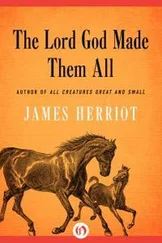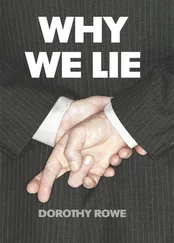“We’ve reached three major decisions about the kibbutz,” Eliav explained as the group approached a large dining hall. “We won’t sleep here. We will eat here. And up till harvesting begins we’ll be allowed to employ the kibbutzniks on the dig.”
“Is that good or bad?” Cullinane asked.
“Rest easy,” Eliav said. “We brought this tell to your attention only because the kibbutzniks kept pestering us with samples. ‘See what we dug out of our tell!’ These kids love archaeology the way American kids love baseball.”
The archaeologists were seating themselves in the large mess hall when a lean crew-cut young man of thirty-five, wearing sandals, shorts and T-shirt, approached to introduce himself as “Schwartz … secretary of this kibbutz. Glad to have you eat with us.”
Cullinane launched a formal and somewhat academic reply, beginning, “We want you to know how much we appreciate …” but Schwartz cut him off.
“We appreciate your dollars,” he said, leaving abruptly to signal a girl who was serving coffee.
“Genial fellow,” Cullinane mumbled as Schwartz deserted him.
“In him you see the new Jew,” Eliav half-apologized. “He’s what makes Israel strong.”
“Where’s he from? He spoke like an American.”
“No one knows, really. He’s probably called Schwartz because he’s dark. He survived, God knows how, both Dachau and Auschwitz. He has no family, no history, only raw drive. Look at his arm when he comes back.”
A good-looking, husky girl in tight shorts strode to the table, dealt out some cups and saucers and began pouring coffee as if she were a laborer pouring cement. Slamming the pot down, in case anyone wanted seconds, she went off to fetch some sugar, but Schwartz had anticipated her and slapped down a sugar bowl before Cullinane.
“Americans want everything sweet,” he said, but Cullinane ignored the remark, for he was staring at Schwartz’s left arm where in blue indelible ink was tattooed a concentration-camp number: S-13741.
“Birthmark,” Schwartz said.
“You speak like an American.”
“After the war I tried living in Boston. But I came here to join the fighting.”
“Did you get your name in Boston?” Cullinane asked.
Schwartz stopped. “How’d you guess that? They were the family I lived with. Nice people but they didn’t know from nothin’. I wanted to be where the war was.”
The husky girl now returned with a second bowl of sugar, started to slam it onto the table, saw that Schwartz had got there first, and retreated with the bowl to another table. As she left, Cullinane said, “It’s refreshing to see a girl who doesn’t wear lipstick.”
“She does it for the defense of Israel,” Schwartz said belligerently.
“How’s that?”
“No lipstick. No salon dancing.”
“For the defense of Israel,” Cullinane repeated.
“Yes!” Schwartz half-snarled. “Ask her yourself. Come here, Aviva.”
The stocky girl sauntered back and said contemptuously, “I’m not one of those salonim.”
“Salonim,” Schwartz interpreted. “Those of the salon.”
“I pledged with all my friends. Never dance salon style.” She looked insolently at Cullinane and left with the awkward rhythm of a girl who excels in folk dancing, and Schwartz followed her.
“I hope Aviva’s not on the pottery crew,” Cullinane said quietly.
“Wait a minute!” Dr. Bar-El flashed. “When I was seventeen I took that same pledge. We felt then as Aviva feels now. Israel needed women who were ready to bear arms … to die at the battlefront if necessary. Lipstick and salon dancing were for the effete women of France and America.” Primly, she put down her coffee cup and said, “I’m glad the spirit still exists.”
“But you wear lipstick now,” Cullinane pointed out.
“I’m older,” Mrs. Bar-El said, “and now I fight for Israel on other battlegrounds.”
It was an odd statement, which Cullinane preferred not to explore at the moment. “I think we should get back for the meeting,” he suggested, and the four scholars wound their way along the pleasant path toward the arched stone house serving as their headquarters, but as Cullinane reached the building he happened to look south across the road and noticed for the first time the olive trees of Makor: they were incredibly old. Their existence was not measured in years or decades but in centuries and millennia. Their trunks were gnarled, their branches broken. Many retained no center wood at all, for the years had rotted away their cores, leaving only fragments standing, but these were sufficient to provide the twisted arms of the tree with life, and in the late spring the olives were covered with those gray-green leaves that made the trees so attractive. Each wind that came down the ancient road rustled these leaves, turning the aspect of the grove from green to gray to some intermediate, shimmering color. Cullinane had seen olives before, but never a grove like this, and as he was about to enter the building from which the dig would be directed, he felt himself pulled across the road to inspect one notable tree—a veritable patriarch whose gnarled trunk was merely a shell through which one could see in many directions. The tree bore only a few branches, but these were thick with maturing olives, and as the archaeologist stood inquiringly beside this stubborn relic he was as close to the mystery of Makor as he would ever be, and in the presence of this august tree John Cullinane felt humbled. It was a proper preparation for a dig and he walked in silence to the room where his paid staff and their nineteen helpers had assembled from various parts of the world in response to an advertisement he had run in various British and Continental newspapers: “An archaeological dig is proposed in western Galilee for the summer campaign of 1964 and succeeding years. Qualified experts are welcomed if they can pay their own transportation to Israel. Food, lodging, medical care provided, but no salaries.” More than a hundred and thirty experienced men and women had applied and from the list he had selected the team who now sat before him. They were dedicated scholars, eager to work at their own expense if only they could help probe the secrets that lay buried in the tell, and each was prepared to use his mind and imagination as skillfully as he used his pick and hoe.
On the blackboard Dr. Eliav had printed the exacting schedule that would govern work for the next five months:
5:00 A.M. Reveille 5:30 A.M. Breakfast 6:00 A.M. to 2:00 P.M. Work at dig 2:00 P.M. Lunch 3:00 P.M. to 4:00 P.M. Siesta 4:00 P.M. to 7:00 P.M. Work in offices 7:30 P.M. Dinner 8:30 P.M. to 10:00 P.M. Consultations
“Any questions?” Eliav asked.
In a high, petulant voice the English photographer whispered, “I don’t find any break for afternoon tea.” Those who knew how tough he could be laughed, and he was assured by Eliav that he, at least, would be provided for. “I shall resume breathing,” the English scholar said.
Eliav then turned the board around to display five lines of data summarizing former digs to remind the archaeologists of the high standards facing them. The lines read:
Campaigns Archaeologist Site Dimensions Available Area 1902–08 Macalister Gezer 880 × 175 140,000 1926–32 Albright Beit Mirsim 300 × 140 40,000 1929–34 Garrod Mount Carmel Small Caves 1,800 1952–57 Yadin Hazor 1,250 × 730 900,000 1965–74 Us Makor 200 × 133 20,000
Now Cullinane took a pointer and said, “Gentlemen, and you very able ladies, I’ve asked Dr. Eliav to list these five earlier digs because we must remember them as we work. The dimensions are in yards and the last figure gives in square yards a rough estimate of the site actually available for digging. You’ll notice that one of the greatest was very small in size, but the results Dorothy Garrod achieved in the Carmel caves were incomparable. She seemed to be digging through deposits of pure gold. I think we could also remember profitably what Kathleen Kenyon accomplished at Jericho, because she didn’t get to that tell till it had been worked over by many predecessors. It took Miss Kenyon to dig down and find the answers. Two other digs are my favorites. Gezer was excavated by one man, Macalister, a church organist from Dublin, with the help of one man, Jemail Tabari’s uncle. But the excavation and reporting done by these two men remain a masterpiece. We’re ten times as many and we must accomplish ten times as much. But our ideal shall be Albright. We give his figures for the last campaign only. He found nothing spectacular at Beit Mirsim, but he taught archaeologists how to work scientifically. When we’re done, I want it said, ‘They worked as honestly as Albright.’”
Читать дальше

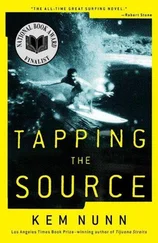



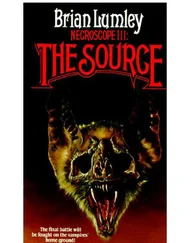
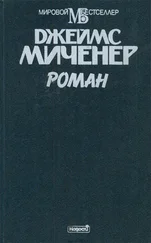

![Джеймс Купер - Пионеры, или У истоков Саскуиханны [The Pioneers, or The sources of the Susquehannah]](/books/395797/dzhejms-kuper-pionery-ili-u-istokov-saskuihanny-t-thumb.webp)
